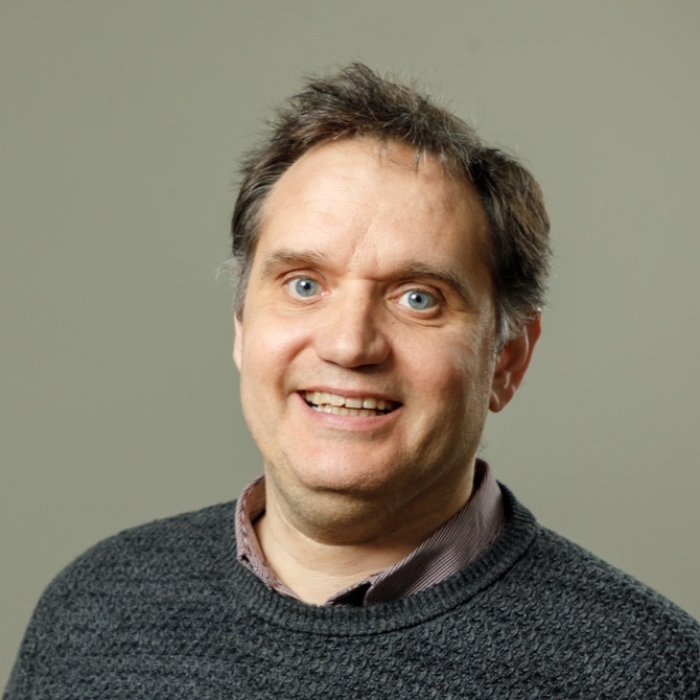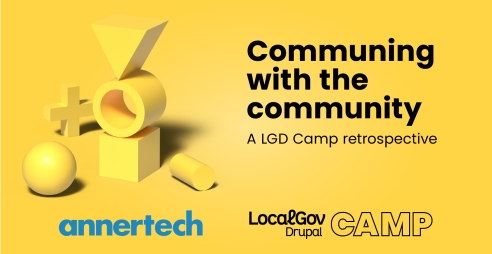Practical and Inspiring Talks at Pixel Pioneers Belfast
Annertech notes from a one-day conference of practical and inspiring talks.
Pixel Pioneers, a one-day conference of practical and inspiring talks, took place at the recently expanded Belfast Waterfront last week. As ever, some of us from Annertech had the privilege to attend. The web design and development event is curated by former editor of net magazine Oliver Lindberg.
We were blessed with eight world-class speakers. Here are our the highlights of them all:
Well, not all, I missed the first talk due to train travel from Dublin! After the second talk, as we were all mingling and having coffee someone said to me that the “We Are Orchestrators” talk had been “very very good”.
As I was heading back into the main room for the third one, someone else started the typical early-hours-at-a-conference chit chat:
- “Are you enjoying it?”
- “So far so good”, I said “A pity I missed the first one and I believe it was very good”
- “First talk was by me!” he replied.
I understood then I was talking to Christopher Murphy, the first speaker of the event.
- “I think it was recorded” he said.
- “Congratulations!” I continued “The best one so far!”
- “Well, the best one of two” he concluded while we approached the venue entrance.
Hopefully I can watch it from the train home, I thought.
Anyway, back to the second talk: “Launching Your First (Side) Product” by Laura Elizabeth, which is really when my conference attendance started.
I found this one a really interesting talk, about Laura launching her own product as a side project. She highlighted the benefits of having a side product, such as having a side income, making yourself more valuable or being less risky with a parallel income.
She explained to us the steps she had taken to launch her first side product, starting with the idea of what the product could be and she recommended starting small, selling something that maybe you already have (she gave an example of vector graphics created for a project that were not used in the end). If you don’t have an idea, though, start with the audience and not with the product itself.
Validating the product is the next natural step. This can take the form of talking to people or pre-selling at a great discount rate before the product is actually ready.
Building an audience was very slow for her at the very start. She recommends starting early, maybe with some public speaking at a local meetup or podcasting, which can be done relatively quickly. Guest posting was another of her recommendations, writing not in your own blog but on other people’s websites.
Launching should be the next expected step, keeping in mind that post-launch is of equal importance to pre-launch.
Her three takeaways were to start small (using something you already have, keeping in mind that a small product will sell very well when compared to a big one), put a landing page as soon as you can to start collecting email addresses and set aside one hour per week.
Next on stage was Harry Roberts who convinced us all “Why Fast Matters”. He started asking the audience who in the room had ever been affected by bad performance, and everyone in the room raised their hand.
He gave some case studies such as Netflix decreasing 43% in their bandwidth bill after turning on Gzip or GQ cutting load time by 80% translating into an 80% increase traffic. So, the benefits of good performance are clear (make you more money, save you money, and make users happy).
Harry explained that most (if not all) of us are not really “mobile first”, at least in terms of performance, giving the example of a 2G mobile connection in the middle of a field somewhere, or how Facebook have this thing called “2G Tuesdays”, where staff members simulate the typical slow internet of the developing world.
Harry explained that we live in a “westernalised bubble” and gave us the example of his site (very well optimised, by the way) taking over a minute to load from Nepal, emphasising that this is happening this year, in 2017. He talked about the next billion users, people going online for the first time ever.
He gave us an example of The Rolling Stones recording an album in the most amazing studio, but how does it sound in a cassette tape in Africa, where that medium is still at a high usage?
So, where to start? First off, be faster than your nearest competitor.
It was a memorable talk, I certainly remembered it on my train home as I was suffering the pain of a bad performance indeed. I’m looking forward to seeing him again at Frontend United where he will be talking about CSS WizardryChris Armstrong concluded the first half of the conference with his “Creating an App on a Shoestring Budget” talk, where he explained the human tendency to mimic what we have already seen elsewhere, and about the different ways we have to adapt our behaviour.
He gave the example of his own company, niice, and how we have to find our own way as we cannot compete doing what the big companies do.
After lunch the great talks continued with graphic and web designer Eva-Lotta Lamm and her “Visual Literacy and Visual Fluency” masterpiece (or at least my favourite talk of the day).
She delighted us with visual expressions of her thoughts that could tell a story (like her travels around the world), sketches that are holiday pictures or “visual” definitions. She even sketched Romeo and Juliet!
Eva-Lotta explained that we are experts consuming visuals, we use icons a lot, there is an ever-growing visual communication going on, but we are only choosing from a predefined vocabulary.
She emphasised the importance of recognition. We recognize images very well, much faster than reading words. Visuals make things memorable. An example of this is the “Dual Coding Theory” that basically multiplies by 2 the visuals and the written word, giving “apple” as an example.
Eva-Lotta concluded with Saul Bass and his quote: “Sketching is thinking made visual”.
She was followed by the BBC News web developer Sareh Heidari who with her “Scaffolding CSS for Scale” talk explained how they manage the CSS at the BBC with grandstand as the example.
Grandstand is a lightweight collection of common scalable CSS abstractions and utility helper classes. Using CSS at scale we can benefit from lack of duplication, from re-usable components.
Components she explained were for example the live pulse, timestamp or a media play video icon, which “look” very different in terms of fonts and colours but they are “really” similar if we look a bit closer.
Similarities were the position of icons (with the same height as the text) and the spacing between them. They were basically multiple components using the same pattern, that she called bullet pattern.
She also explained Grandstand’s naming conventions and how they approach GEL (Global Experience Language) Typography, GEL Grid and GEL Iconography, so all BBC products have a similar look and experience.
Sareh concluded highlighting the importance of an standard spacing unit, breakpoints and typography when localising CSS setup.
Empathy and communications consultant Sharon Steed continued the show with her very touching “Cultivating Community: Building Powerful Relationships by Communicating with Empathy” talk.
Her talk stated that we live in a chaotic world in terms of communication and collaboration. She gave the example of twitter, which is very chaotic, and explains that chaos is going to create even more chaos, and may eventually destroy connections.
Sharon stammers and she explained that she decided to become a public speaker to take ownership of it, to talk about stuttering. She tries to be transparent by allowing people to be part of the conversation, to feel more comfortable. She highlighted the importance of communicating with empathy, because by doing so we are speaking people’s own language, with listening and paying attention being the key components.
She concluded stating that true connection happens not when we're speaking, but when we're listening.
“The Power of CSS”, the last talk of a great day was a grande finale by Una Kravets where she delighted us with multiple demos of wow-factor CSS.
Her talk started asking the audience how many of us “love” CSS (about 50% raised their hands) and she guaranteed the rest that by the end of her talk they will be converted, as indeed they were.
The awesome CSS demos she delighted us with included such things as fake typography, filters, blend modes and even a CSSgram that recreates Instagram filters done with CSS only.
UI components that can be built without JavaScript, such as accordions, tab navigation, modals, etc all of them built purely with CSS.
We were also delighted with css grid (grid-gap is so good), variable and gradient tricks.
Her talk and the whole conference concluded with her last statement: The real power of CSS is that it creates a common language for designers and developers. I couldn’t have agreed more.
There were two very promising workshops on Friday by Harry Roberts (Front-End Performance: Building Faster Websites) and Eva-Lotta Lamm (Sketching Interfaces).
I was really interested on the Sketching interfaces one, but unfortunately I wasn’t able to make it due to other commitments.
Overall it was a great privilege to see such a collection of brilliant speakers and talks in the same day and that this brand new series of affordable events bringing world-class advice from the brightest minds in web design and development came on a relatively close two hours train journey from Dublin.

Ricardo Flores Galán UX Designer
Ricardo is our lead UX designer with almost 20 years' experience in the industry. A native of Spain, he is a multi-awardwinning designer and is a regular contributor to UX events across Europe.

